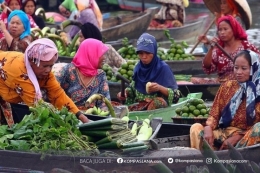Kominfo. (2024). Indeks Literasi Digital Indonesia (ringkasan eksekutif). Kementerian Komunikasi dan Informatika.
Lambrecht, A., & Tucker, C. (2013). When does retargeting work? Journal of Marketing Research, 50(5), 561–576.
Lyon, T. P., & Montgomery, A. W. (2015). The means and end of greenwash. Organization & Environment, 28(2), 223–249.
Muchnik, L., Aral, S., & Taylor, S. J. (2013). Social influence bias. Science, 341(6146), 647–651.
Niinimäki, K., Peters, G., Dahlbo, H., Perry, P., Rissanen, T., & Gwilt, A. (2020). The environmental price of fast fashion. Nature Reviews Earth & Environment, 1(4), 189–200.
Norberg, P. A., Horne, D. R., & Horne, D. A. (2007). The privacy paradox. Journal of Consumer Affairs, 41(1), 100–126.
Nyilasy, G., Gangadharbatla, H., & Paladino, A. (2014). Perceived greenwashing. Journal of Business Ethics, 125(4), 693–707.
Przybylski, A. K., Murayama, K., DeHaan, C. R., & Gladwell, V. (2013). Fear of missing out. Computers in Human Behavior, 29(4), 1841–1848.
Reed, A. (2004). Activating the self-importance of consumer selves. Journal of Consumer Research, 31(2), 286–295.
Seuring, S., & Müller, M. (2008). From a literature review to a conceptual framework for sustainable supply chain management. Journal of Cleaner Production, 16(15), 1699–1710.
Testa, F., Iraldo, F., Vaccari, A., & Ferrari, E. (2015). Why eco-labels can be effective marketing tools. Business Strategy and the Environment, 24(4), 252–265.

![[publicspeaking] Omongan Pejabat Bukan Sekadar SUARA, Ia Cermin ETIKA Bangsa](https://assets-a2.kompasiana.com/items/album/2025/09/05/chatgpt-image-sep-5-2025-01-27-47-pm-68ba8302ed64151e1c3c86a2.png?t=t&v=100&x=100&info=meta_related)





